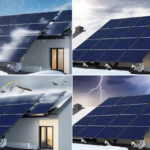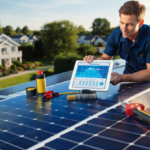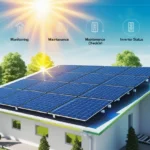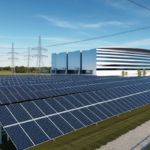Extreme weather can be a silent enemy to your solar panel system. Whether it’s scorching heat, heavy snowfall, or violent storms, your panels are exposed to the elements year-round. If you’re relying on solar energy for your home or business, you need to know how to shield your system from damage and performance drops.
In this guide, you’ll learn how to prepare, protect, and maintain your solar panels in any weather condition—so you don’t end up paying for costly repairs or losing valuable energy.
🌪️ Why Weatherproofing Matters for Solar Panels
You might assume solar panels are built to handle anything, and while they are durable, they’re not invincible. Hail, strong winds, or extreme heat can degrade your system’s performance over time.
Here’s how harsh weather can affect your setup:
- Hail or flying debris can crack the glass surface.
- Excessive snow can block sunlight and strain mounts.
- Lightning and storms can lead to power surges or electrical damage.
- High temperatures can reduce energy efficiency and accelerate wear.
If you don’t take preventive action, these elements could shorten the lifespan of your solar array or even void the warranty.
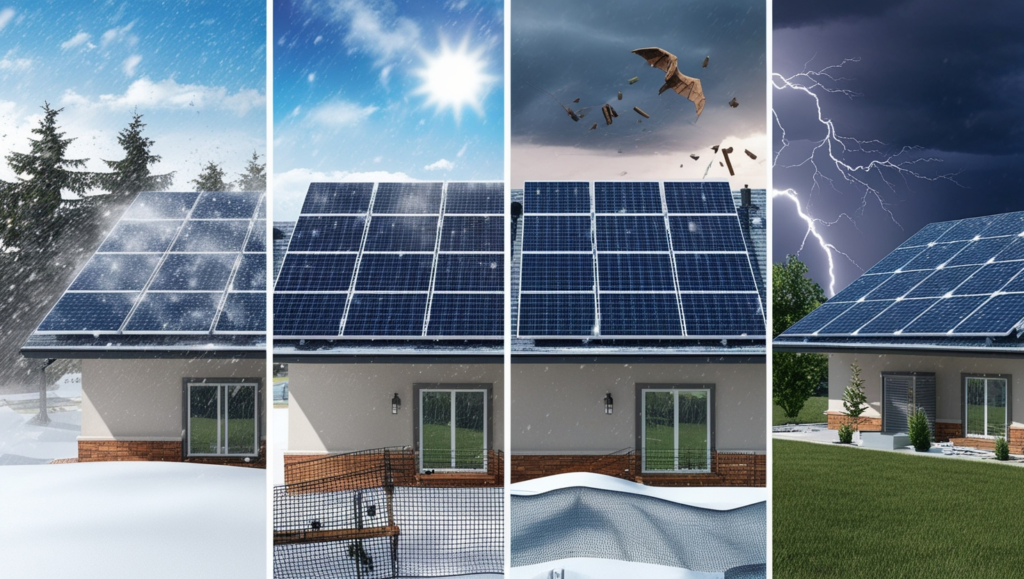
🧰 7 Proven Ways to Protect Your Solar Panels Year-Round
Let’s break down the practical steps you can take to weatherproof your investment and ensure your solar system runs smoothly in any climate.
1. Install a Protective Mesh or Cover
Debris from storms or animals can damage your panels. A fine stainless steel mesh around the panel edges keeps out nesting birds, leaves, and twigs without blocking sunlight.
2. Use Strong Mounting Hardware
Your mounting system is your first line of defense. Make sure your racking system is built with high-quality, weather-resistant materials. It should be wind-rated to handle local storm conditions.
3. Schedule Post-Storm Inspections
After major weather events, don’t assume everything’s fine just because the lights are on. Look for:
- Visible cracks
- Loose wiring
- Shifts in panel positioning
Catch problems early, and you’ll avoid expensive downtime.
4. Trim Nearby Trees
Tree branches pose a double threat: falling limbs can break panels, and excessive shade reduces output. Keep trees trimmed and healthy to avoid unnecessary risks.
5. Add a Monitoring System
Real-time performance tracking helps you spot underperformance immediately. You’ll know if a weather event caused a dip in energy output—and you’ll be able to act fast.
6. Check Seals and Wiring Annually
Extreme cold or heat can cause seals to crack and wires to expand or contract. Prevent water leaks and electrical faults by inspecting these parts at least once a year.
7. Consider Panel Insurance
If you live in an area prone to hurricanes, hail, or fires, speak with your provider about adding your panels to your homeowner’s insurance or purchasing a separate policy.
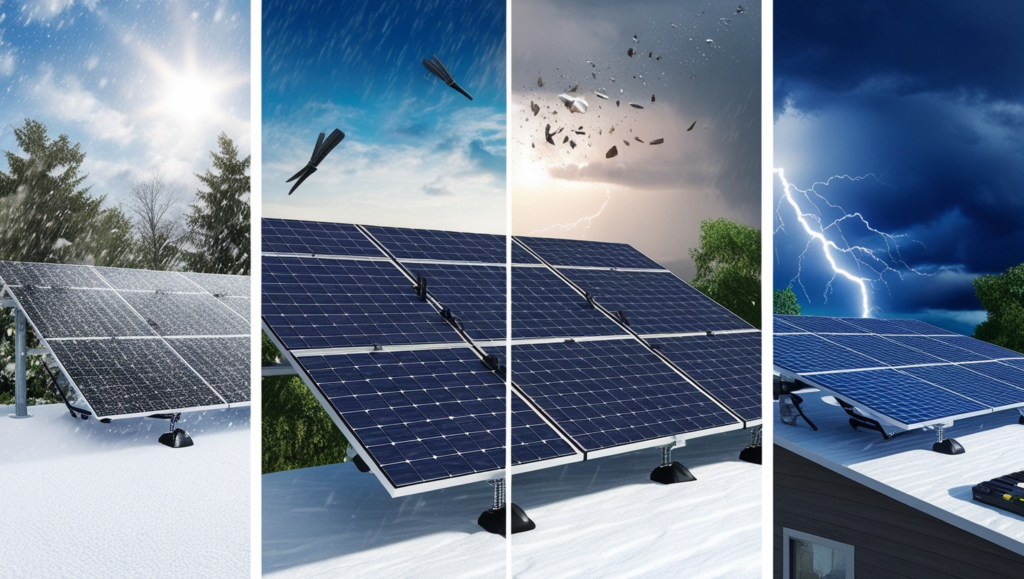
🧊 How to Handle Cold Climates
Don’t worry—solar panels actually perform better in cooler weather. But when snow piles up, here’s what to do:
- Use a soft-bristle snow brush to gently clear panels.
- Avoid de-icing chemicals that can corrode surfaces.
- Make sure your panels are tilted to allow snow to slide off naturally.
🔥 Solar in the Heat: Tips for Hot Weather Protection
High temperatures can lower your panels’ voltage output. Here’s how to beat the heat:
- Install ventilation gaps between panels and the roof to allow airflow.
- Opt for heat-tolerant inverters and optimizers if you’re in an especially warm region.
- Monitor system output during peak heat hours and compare with seasonal benchmarks.
💡 Keep Your System Weather-Ready
Being proactive is the smartest way to protect your solar investment. Whether it’s summer storms or winter freezes, a well-maintained system gives you consistent energy and peace of mind.
Here’s your quick checklist:
- ✅ Inspect panels seasonally
- ✅ Secure mounts and racks
- ✅ Monitor system performance
- ✅ Address any warning signs early
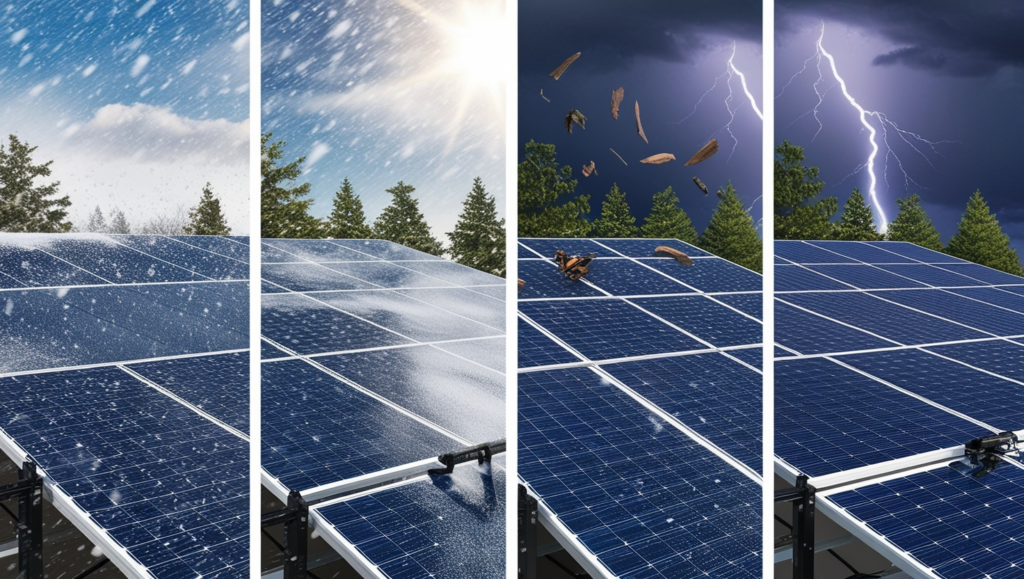
🔔 Stay Ahead of the Weather—And the Repairs
If you want to keep your solar system safe, efficient, and long-lasting, don’t wait for disaster to strike. Prepare now, and you’ll save yourself stress, time, and money down the road.
Want more tips on optimizing your solar setup?
👉 Subscribe to our newsletter or bookmark our blog for weekly updates on solar performance, weather protection, and maintenance best practices.
Let’s protect your solar power—together.


